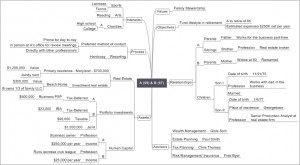Guest post:”Using Story Telling to Educate Clients and Prospects”
Plenty of financial advisors write books to enhance their credibility. However, I don’t know many who have written fiction in their pursuit of a broader audience. In his guest post, Chuck Rylant explains why he turned to telling stories to reach clients and prospects. You may want to consider something similar for a blog post or presentation.
Using Story Telling to Educate Clients and Prospects
By Chuck Rylant
Getting and keeping your readers’ attention is incredibly difficult when you’re competing with thousands of messages from multiple  media sources. It is even more difficult when you’re writing about a topic often considered dry and boring.
media sources. It is even more difficult when you’re writing about a topic often considered dry and boring.
We in the financial planning industry often find mutual funds, interest rates and tax laws intriguing, but our clients and those who need our services often do not. Before I wrote my personal finance book, I thought long and hard how I could share a message that would stick.
I decided to take a lesson from the bestselling book of all times—the Bible—with claims of 6 million sold. It’s hard to argue with those kinds of numbers.
Regardless if you follow a faith or not, most know the story of Adam and Eve. We have all heard about the forbidden fruit and the message of temptation. We remember the lesson because it’s told as a parable.
Do you think we would remember those lessons as well if they were written as a list of rules to follow? There is such a list, but I suspect more people know the forbidden fruit lesson than can cite the list of 10. It’s far easier to become engaged and remember the lesson if it is presented as a story.
One of my more popular blog posts is a true story about my first experience in Mexico where I illustrate a point through a kidnapping. Stories can be presented as truth or fiction and have the same impact.
I used to take pride in the fact that I never read fiction, until I realized I was missing a powerful way to improve my own writing. It is certainly a skill that takes time to learn and improves with practice, but try it and watch how much more engaged your readers become.
Chuck Rylant, MBA, CFP® is the author of How to be Rich: The Couple’s Guide to a Rich Life Without Worrying About Money available at Amazon.com









